If you were lead to believe that any of the most recent scandals regarding online privacy, rigged elections, invasion of privacy or fake news issues are hurting digital marketing and advertising, think again… Maybe, this is just another case of “there’s no such thing as bad publicity” but the fact is that advertising dollars follow human eyeballs, and those eyeballs are now primarily on internet connected devices.
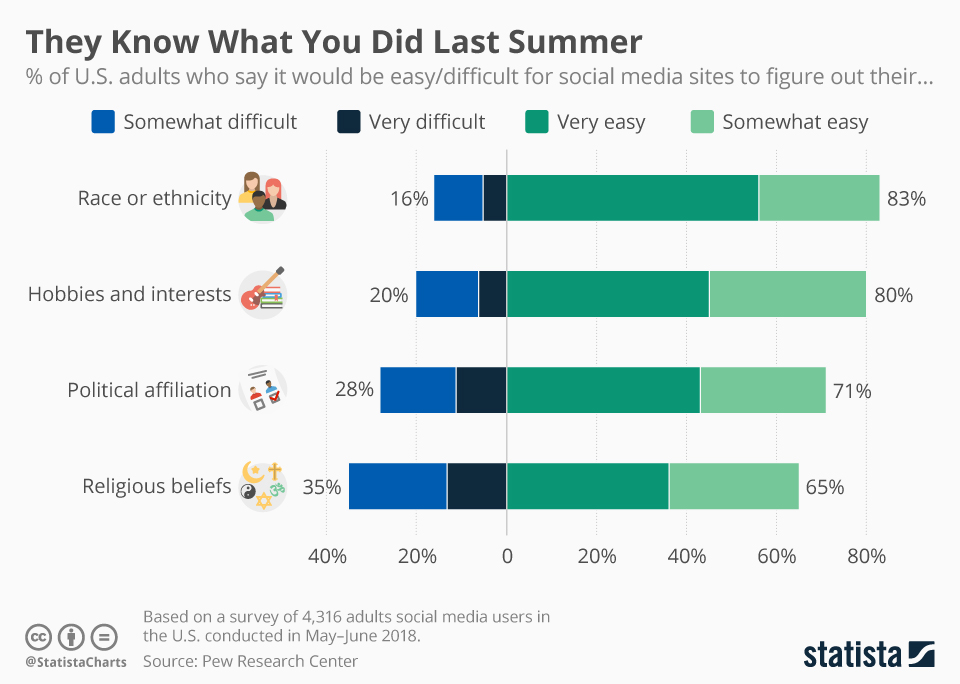
Privacy? What privacy? According to a recent study published by the Pew Research Center, Americans are painfully aware of what social networks know about them. The vast majority of adult users think that it would be easy for social media companies to figure out their race/ethnicity, hobbies and interests, political affiliation and religious beliefs based solely on the information they shared on their site.
Ok, so now that we’re all clearly exposed all over the Internet, here are just a few stats that I’ve gathered to show the shift that is currently happening in the advertising world. And beyond that, a good indication about the way that all of us consumers, spend most of our time these days.
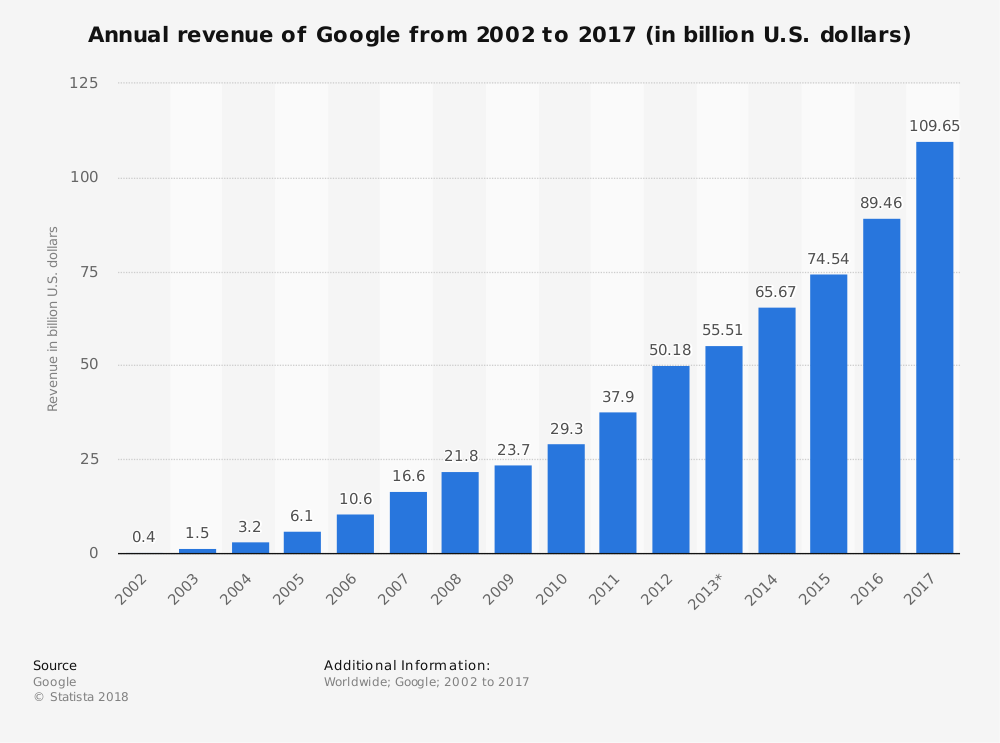
Let’s start by taking a quick look at Google’s annual revenues over the past 15 years. Staggering growth, right? Well, according to Digital Marketer, Google’s market share of digital advertising is around 42% with Facebook closing in. Yet, the bulk part of Google’s overall revenues, estimated at around 85% comes from digital ads. I guess those ads must work…
Let’s look at Facebook now. The most hatred social media network these days… or maybe not by advertisers. When Facebook filed for its initial public offering in early 2012, the company named the ongoing transition to mobile as one of the biggest risks to its future success. I guess after all these years, that transition hasn’t gone too bad for them.
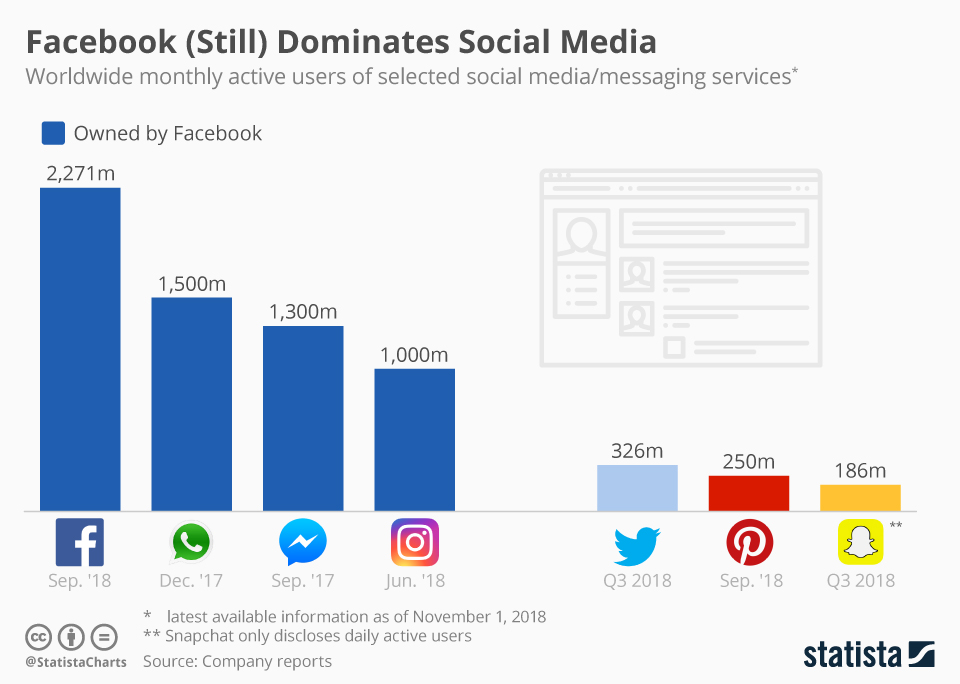
As you can see above, Facebook and its other owned entities (Whatsapp, Messenger and Instagram) pretty much owned the “active users” category at this point, leaving Twitter, Pinterest and Snapchat fighting for scraps.
More users equals more advertisers trying to reach those users. And since those users are now primarily on mobile devices, it’s no surprise that Facebook’s ad revenue has grown exponentially over the past five years. Even more astonishing is that mobile advertising has accounted for more than 90 percent of Facebook’s revenue growth in the past quarters and it currently generates around 90 percent of the company’s total revenue. Mission accomplished for them as far as mobile revenues go.
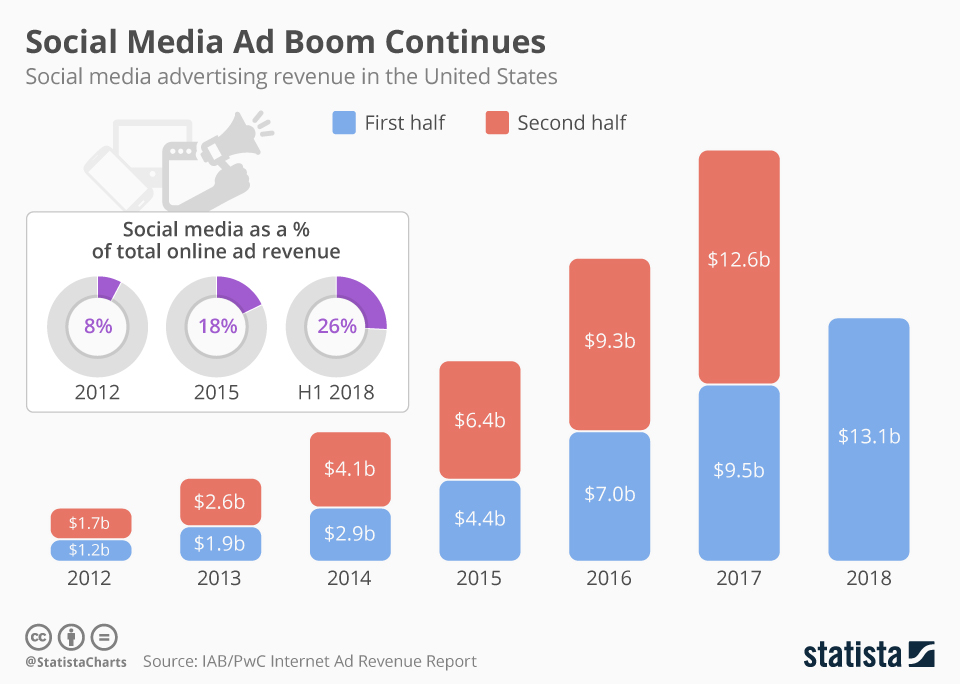
And the growth of social media advertising continues year after year. At MGR we keep saying that advertising on Facebook or Instagram is underpriced and still is… however, as more advertisers and especially, larger corporations finally realize that consumers’ attention is not on TV anymore and they shift their ad dollars to social media, those ads are quickly going to become very expensive. Think Google AdWords average CPC ten years ago compared to where it is today.
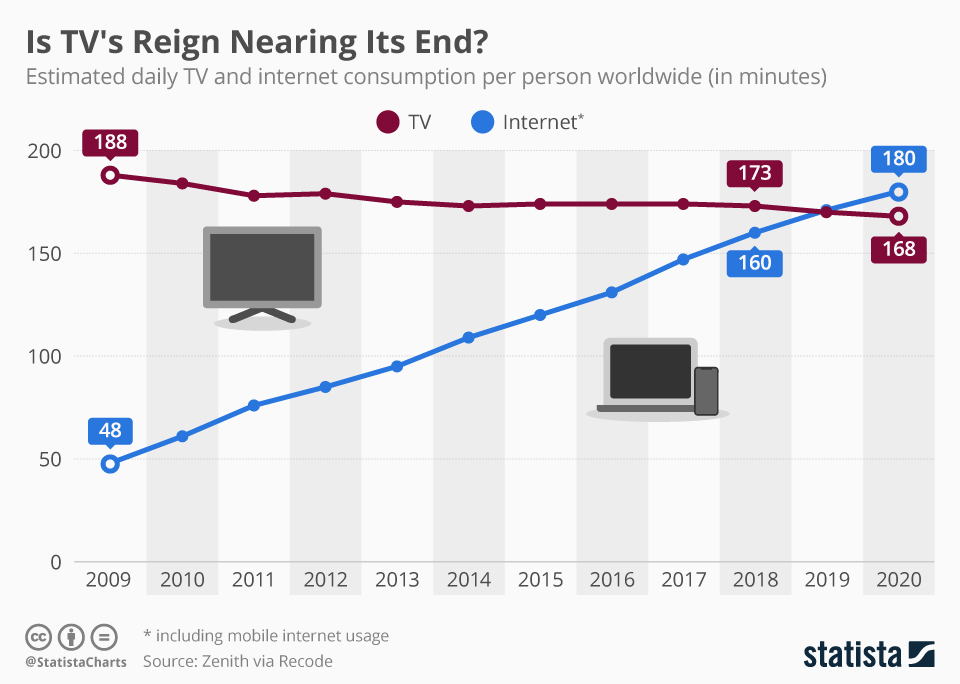
Of course, we still consume a lot of media every day. Averaging almost 8 hours a day, people around the world spend more time consuming media than ever before. That’s according to data recently published by Zenith, which also points out an interesting trend in media consumption.
For decades, TV was the undisputed number 1 in terms of daily media usage, and it still is. However, as internet consumption (both mobile and desktop) has risen sharply over the past decade, it looks as though TV’s reign could soon be coming to an end. Again, less advertisers follow eyeballs and those eyeballs are not on TV sets anymore.
According to IAB, digital ad spending is on track to pass the $100 billion milestone for the first time this year. Total internet ad revenue amounted to $49.5 billion through the first six months of the year, with ad spending typically picking up ahead of and during the holiday shopping season.
Thank you for reading. Until next time, this is Manuel Gil del Real (MGR) checking my Instagram account as I type.
Sources: Google, Statista, Facebook, Pew Research, Zenith, The Washington Post




